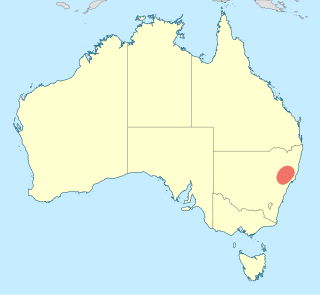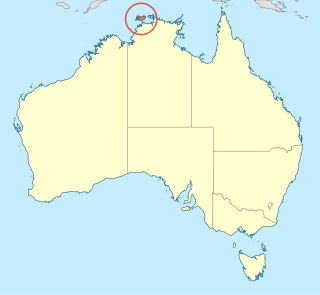
The Odonata are an order of flying insects that includes the dragonflies and damselflies. Like most other flying insects, they evolved in the early Mesozoic era. Their prototypes, the giant dragonflies of the Carboniferous, 325 mya, are no longer placed in the Odonata but included in the Protodonata or Meganisoptera.
Phyllopetalia is a genus of dragonflies in the family Austropetaliidae. They are commonly known as Redspots.

Anisoptera costata is an endangered species of plant in the family Dipterocarpaceae. The name costata is derived from Latin and describes the prominent venation of the leaf blade. A huge emergent tree up to 65 m high, it is found in evergreen and semi-evergreen lowland tropical seasonal forests of Indo-Burma and in mixed dipterocarp forests of Malesia.
Anisoptera curtisii is a species of plant in the family Dipterocarpaceae. It is found in Indonesia, Malaysia, and Thailand.
Anisoptera grossivenia is a species of plant in the family Dipterocarpaceae. The name grossivenia is derived from Latin and refers to the purple lateral veins of the leaf blade. A. grossivenia is a tall emergent tree, up to 60 m, found in mixed dipterocarp forest and its ecotone to kerangas forests. It is endemic to Borneo. It occurs in at least two protected areas, elsewhere it is endangered due to habitat loss.
Anisoptera laevis is a species of plant in the family Dipterocarpaceae. It is found in Brunei, Indonesia, Malaysia, and Singapore.
Anisoptera marginata is a species of plant in the family Dipterocarpaceae. The species name marginata is derived from Latin and refers to the distinct intermarginal vein of the leaf blade. A. marginata is a canopy tree, up to 45 m tall, found in mixed peat swamp forests and in poorly drained kerangas forests. In Sabah it is also found on soils derived from ultrabasic rock. This species is found in Sumatra, Peninsular Malaysia and Borneo. It is found within at least one protected area.
Anisoptera reticulata is a species of plant in the family Dipterocarpaceae. It is found in Brunei and Malaysian Borneo.

Anisoptera scaphula is a species of plant in the family Dipterocarpaceae. It is native to Bangladesh, Peninsular Malaysia, Laos, Myanmar and Thailand.
Carapa megistocarpa is a species of flowering plant in the family Meliaceae. It is endemic to Ecuador, where it is a tree of coastal forests. It is endangered by deforestation and is harvested for timber.
Iryanthera megistocarpa is a species of plant in the family Myristicaceae. It is endemic to Panama. It is threatened by habitat loss.
Lagerstroemia anisoptera is a species of plant in the family Lythraceae. It is a tree endemic to Peninsular Malaysia. It is threatened by habitat loss.

Anisoptera is a genus of plants in the family Dipterocarpaceae. The name Anisoptera is derived from Greek and describes the unequal fruit calyx lobes. It contains ten species distributed from Chittagong (Bangladesh) to New Guinea. Eight out of the ten species are currently listed on the IUCN redlist. Of these, four species are listed as critically endangered and the other four as endangered. The main threat is habitat loss. The timber is a light hardwood.

Cannaphila is a small Neotropical genus of dragonflies in the family Libellulidae. They are commonly called narrow-winged skimmers. One species, C. insularis, occurs in North America. There are three species.

Armagomphus armiger is a species of dragonfly of the family Gomphidae, known as an armourtail. It is the only known species of the monotypic genus Armagomphus.

Austropetalia annaliese is a species of dragonfly of the family Austropetaliidae. It is endemic to mountain areas of north-eastern New South Wales, Australia, where sphagnum moss is abundant. It is a medium-sized dragonfly with brown and yellow markings, the female being similar to both Austropetalia patricia and Austropetalia tonyana.

Huonia melvillensis is a species of dragonfly of the family Libellulidae, known as the forestwatcher. It is the only species of Huonia in Australia, where it has been found on Melville Island, Northern Territory. It inhabits pools in streams. It is a small dragonfly with black and pale green markings and a clubbed abdomen.

Eusynthemis aurolineata is a species of dragonfly of the family Synthemistidae, known as the variable tigertail. It is a medium-sized dragonfly with black and yellow markings. It inhabits mountain swamps and streams in eastern Australia

Austrophlebia subcostalis is a species of dragonfly of the family Telephlebiidae, commonly known as the northern giant darner. It is an enormous dragonfly with brown and yellow markings. It inhabits rainforest streams in north-eastern Australia

Anisoptera thurifera is a tree species in the family Dipterocarpaceae. This Asian species has been recorded from Bangladesh through to New Guinea; the IUCN has categorised it as Vulnerable.











